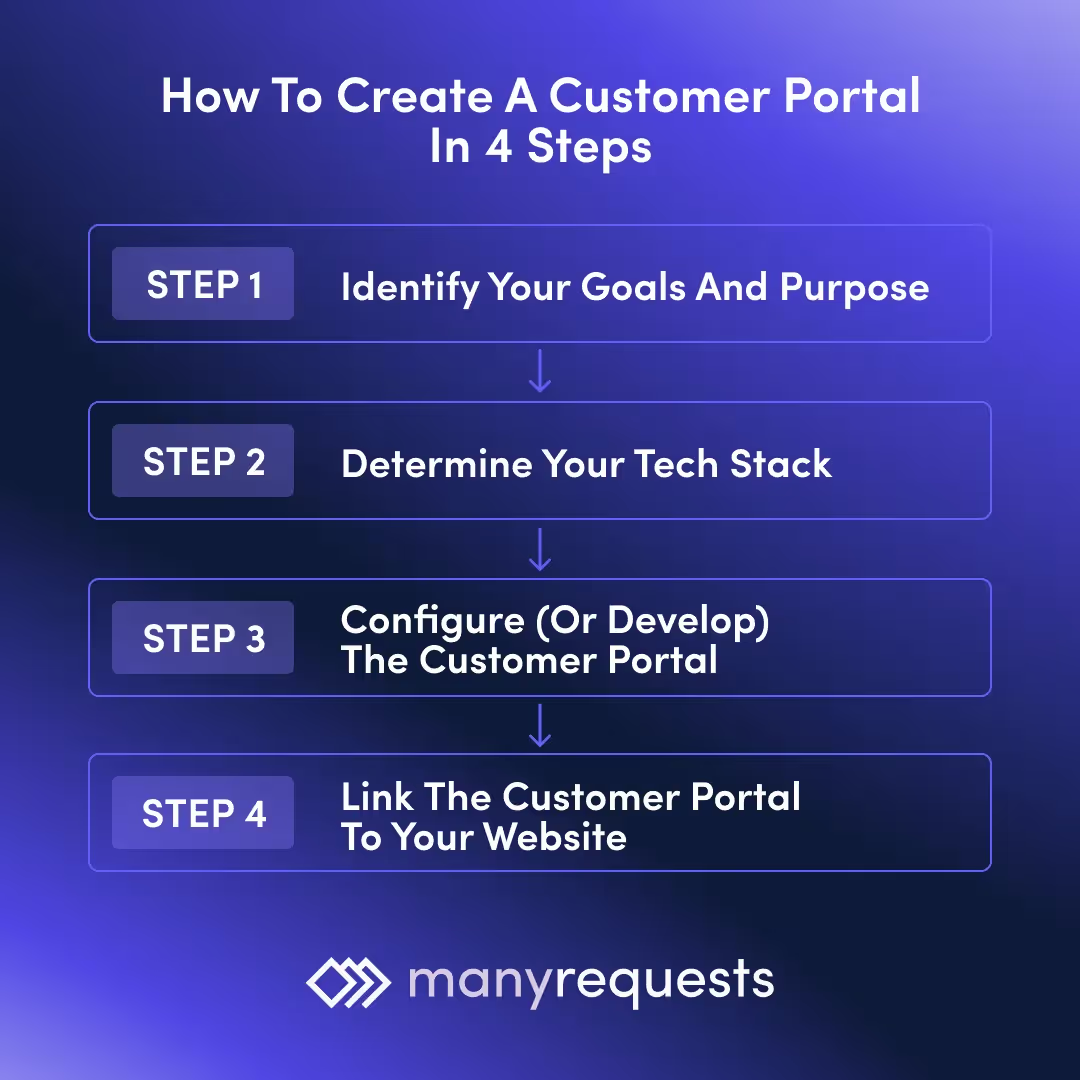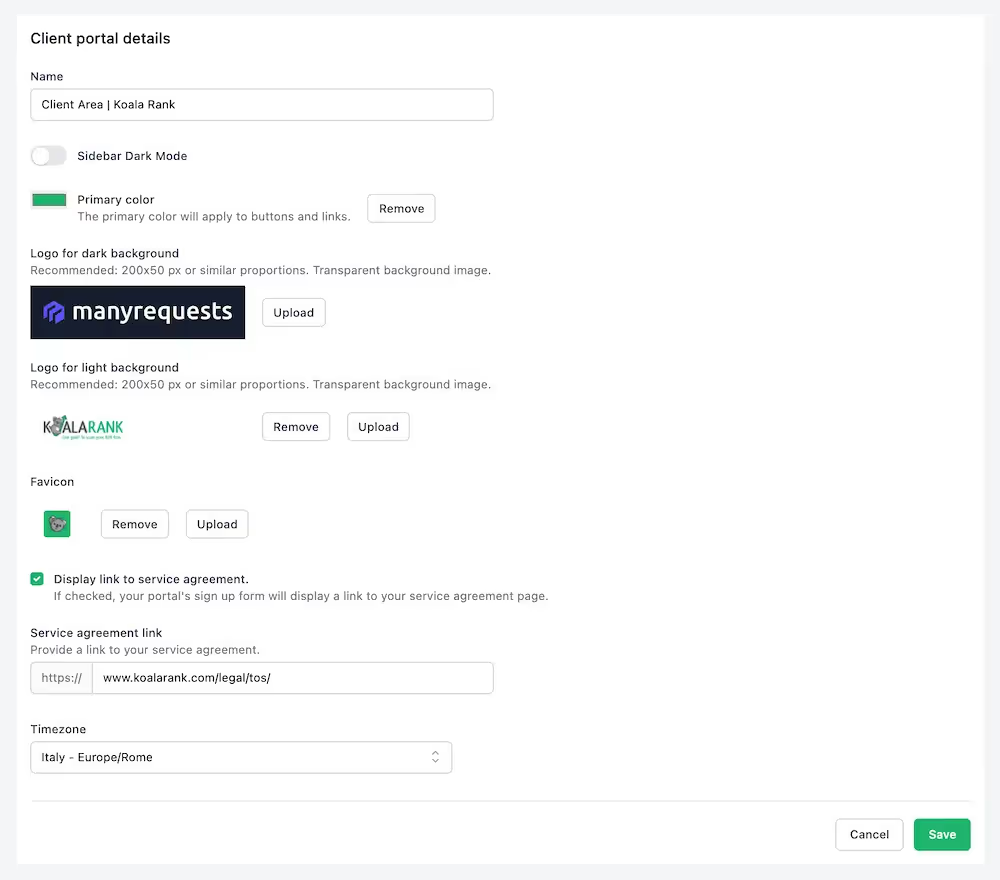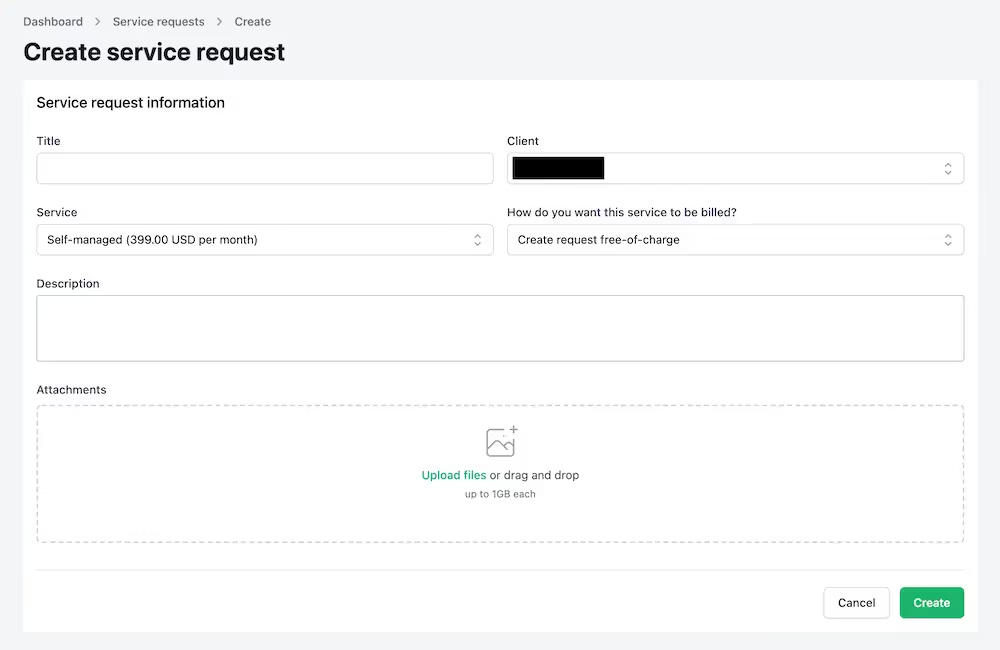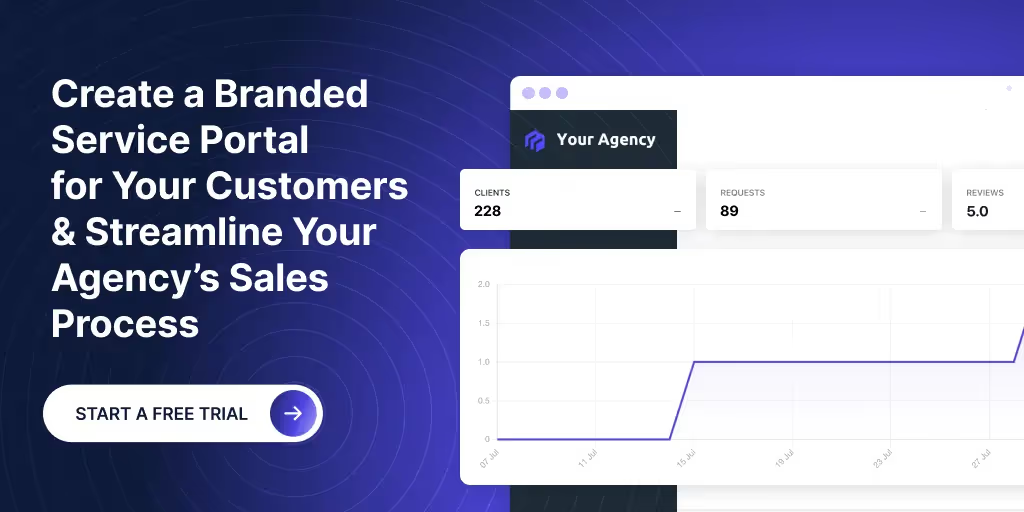How To Create a Customer Portal from Scratch in 4 Steps
Here's how to create a customer portal in 4 easy steps irrespective of the tool you use.




Agencies use different tools to manage their clients, like a messaging platform, project management apps, billing software, and reporting dashboards. Let’s not forget the chaos of handling long email threads and the stress of losing important documents.
This approach can make you look unprofessional and disorganized. Plus, clients don’t like hopping on multiple tools to get information.
So, what’s the best solution? Having a customer portal.

With an online customer portal, you can manage all your client relationships easily. Think of a customer portal like an app dedicatedly made for clients where they can manage all of their data, upload whatever you want your customers to see, and get to interact with them simultaneously.
In this article, we will talk in detail about what a customer portal is, the importance of creating a customer portal for agencies, and how you can create them in four easy ways.
Let’s get started.
A customer portal, also known as a web portal, is an online self-service platform that provides clients with complete visibility into their interactions with the business. They can assign requests, track key metrics, upload documents, or check timelines for project completion.
For instance, check out the ManyRequests client portal. You can see the number of requests, their status, who they are assigned to, and their due date. You can also chat with other users to get information.

Customers want to be able to access and act upon certain information without the need to contact a representative. But what does your company get out of implementing this?
Portals strengthen your relationship with customers, making it easy for them to see the effects of working with you rather than waiting for an email without a clear timeline, no sense of where the project is at the moment, and no way to contact the right person if something goes wrong.
Ideal customer portal software provides secure file uploads, white labeling options, easy communication through messaging and group texts, file approvals, and other client onboarding tools that make project management seamless.
Businesses have become more self-reliant and prefer searching for the information that they need from your company on their own, without needing to connect with a support representative at your company for certain actions. This is the purpose of creating a customer portal.

The operational efficiencies are huge when you consider how a portal allows you to connect the dots between what you do in the backend and what customers see in the frontend:
More businesses than you think use customer portals. Any company selling to other companies will benefit from this solution.
For instance, if you are an agency owner handling multiple clients, you may struggle with constant customer calls. They would want to know project availability, task status and delivery timelines.
However, suppose you introduce a user-friendly customer portal where users can access a wealth of information and manage their accounts independently. In that case, your team is freed up to focus on complex inquiries and building customer relationships.
Simply providing an "online portal" is not enough. Your portal needs to be developed with the goal of engaging your customers and building long-term relationships with them, so you need it to allow for a two-way collaboration and not just a "look at what we've done" interface.

A badly-done portal only allows you to see information without the ability to act on it.
The best portals should convince your customers that using them will make a difference in their success with the service you provide, as well as enhance your business operations.
Some of the key concepts of a customer portal are:
When you invest in a robust portal that empowers your customers to get things done easily on their own, it improves their experience and increases overall satisfaction. Satisfied customers become repeat customers, and a feedback loop then kicks in for you to keep improving.
Traditionally, you didn't have options to bring up your own client portal without investing hundreds of thousands of dollars in development.
The landscape has changed dramatically since then, and you now have ready-made portals like ManyRequests, which allow you to implement all the above-mentioned functionality while keeping your brand front and center (and your customers satisfied!).
In order of how easy they are to set up, some ways to bring up your own portal are:
The former is the easiest, as you can fully separate your website environment from the customer portal, making the setup process independent of whatever technology you use for the site.
With WordPress, you can technically do it, but it's tedious. That's because, if you've spent any time working with WordPress, you'll know that it breaks every time you make a change.

Client portal plugins available on WordPress are clunky and tedious to set up.
This means that time spent debugging, fixing, testing, and finalizing a variety of technical changes that you didn't initially sign up for. And the experience for customers isn't that great either, as most plugins will make use of the very utilitarian look of WordPress' dashboard.
The last option is, by far, the most expensive and time-consuming. Developing your own customer area is only worth it if you're a huge brand, which isn't the case for most people.
Here are four simple steps to creating a custom client portal:
You can't design, much less set up, a portal if you don't know what your services do for your customers, down to the smallest detail, including how you report "success" for their project.
Your customer portal should fit the specific needs of your clients and business. Ask yourself, “What do you want your customers to be able to do through the portal, and how will it help your business?
For instance, if you run a content marketing agency, you need a platform where customers can track project submissions, add edit requests, give direct feedback, and share information. This makes sure it meets the unique needs of your agency by sharing information, tracking deadlines, and communicating.
If you want to offer a scalable way for you and your customers to benefit from your services, you need to package them as if they were a product. This allows you to break their scope down into clear-line items that you can then implement as features within your customer portal.
List the specific features you want to offer your clients and start building them in your customer portal.
Before you jump off to creating your customer portal, there’s one little thing you need to do: what tools do you currently use to run your business?
For instance, you might use Trello to manage tasks, DocuSign to send and sign contracts, and Stripe to bill payments.
Whatever the case, make a list of all the tools you are currently using and what each one is for.
Here’s the list of tools most agencies need to run their businesses:
As you can see, there is a lot to manage. So, instead of using all these tools, you can replace some with a no-code client portal, that is ManyRequests

The configuration stage is where you're able to establish the "always-on" settings of your portal, including the theme, login experience, communication options, and more.
If you've done the work of writing down the requirements to the best of your ability, step #3 will be much simpler to go through, and you won't have to go back for missing functionality.
Applying your branding to the customer portal
You'll want to start with your branding.
Get your logo, domain name, and colors up first.
Then, spend some time setting up your services properly by creating intake forms for you to collect the right information from customers based on the type of task they are requesting.

Do this for each individual service that you offer, and make it easy for customers to checkout directly online without you having to send out an invoice beforehand.
Once your services are set up, it's time to ensure that they work for the intended use case by embedding them in an unpublished part of your website and going through the flow.
Eliminate any potential causes of friction:
Whatever you feel that doesn't make for a great experience, get rid of it or redesign it into a user-friendly one. As you get confident with the process, it's time to embed it on your website.

You've done all the hard work of setting up your customer portal and effectively creating one from scratch. Now is the time to bring it live for your customers to use themselves.
One thing that I want to stress is that the customer experience doesn't have to be perfect the first time around; it just needs to be functional for it to be worth going live.
Got the foundations in place?
Then launch the portal.
It won't do you any good to dwindle on whether the portal is good for customers because one thing or another is missing—clients will inform you of this.
Instead, make sure that crucial things like service setup, payments, and branding are ready to go and functional. The rest will fall into place over time as both you and your customers start using the portal on a daily basis. Their feedback is crucial at this stage!
The data collected via a customer portal can be an invaluable tool for the growth of your company. A good portal can help you determine what the most pressing concerns are facing your customer, and it allows you to proactively provide answers to their most frequently asked questions.
Content collected from a customer portal can also be a strategic asset as you develop a roadmap for your company. It allows you to understand what your customers want before they even come looking for it and gain an understanding of their present and future behavior.

Searching for the right customer portal for your agency is hard. It can feel like finding a needle in a maze with unlimited options and capabilities. However, you have to stick to “what do you want your customers to be able to do through the portal, and how will it help your business?”
If you’re looking for a client portal solution that’s dedicatedly built for design and creative agencies, then ManyRequests should be your priority.
ManyRequests isn't just a project management tool but rather a complete suite of tools made for service providers to help clients serve themselves. From custom checkout forms to service catalogs, you can provide every feature your agency clients would ever need.
Sign up on ManyRequests and get started for free.
Originally Posted: April 21, 2021